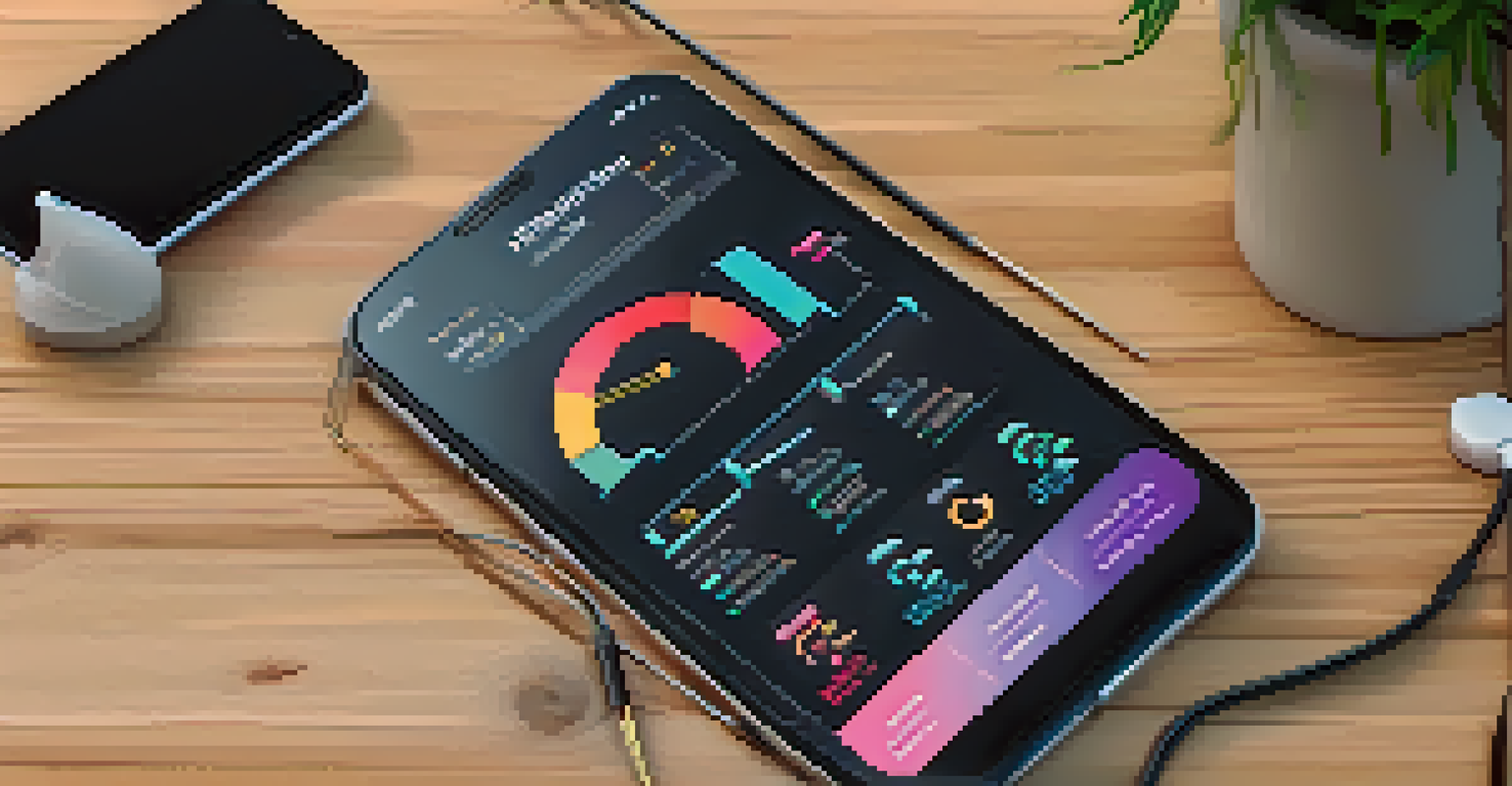Integrating Technology in Chronic Care Models for Better Outcomes

Understanding Chronic Care Models and Their Importance
Chronic care models (CCMs) are frameworks designed to improve the management of chronic diseases. These models focus on proactive care and emphasize the importance of patient engagement and self-management. By fostering a collaborative relationship between patients and healthcare providers, CCMs aim to enhance the quality of life for individuals living with chronic conditions.
The greatest medicine of all is to teach people how not to need it.
One of the key components of CCMs is their emphasis on continuous care rather than episodic treatment. This shift allows for more personalized care plans that adapt to the evolving needs of patients. The goal is to not only manage symptoms but also to prevent complications and hospitalizations, ultimately leading to better health outcomes.
Integrating technology into these models can significantly enhance their effectiveness. Tools such as telehealth, mobile health apps, and electronic health records (EHRs) streamline communication and make it easier for patients to access their care teams. This technological integration is essential for modernizing chronic care management and improving patient experiences.
The Role of Telehealth in Chronic Care Management
Telehealth has emerged as a game-changer in chronic care management, allowing healthcare providers to reach patients wherever they are. By using video calls, phone consultations, and remote monitoring tools, providers can maintain consistent communication with patients, which is crucial for managing chronic conditions. This accessibility is especially beneficial for patients in rural areas or those with mobility challenges.

Through telehealth, patients can receive timely interventions without the need for frequent in-person visits. This not only saves time but also reduces healthcare costs associated with transportation and missed appointments. For instance, patients with diabetes can have their blood sugar levels monitored remotely, allowing for immediate adjustments in their treatment plans if necessary.
Chronic Care Models Enhance Management
Chronic care models focus on proactive care, improving patient engagement and self-management to enhance quality of life.
Moreover, telehealth encourages patient engagement by making healthcare more convenient. Patients are more likely to participate in their care when they can easily communicate with their providers and receive support from the comfort of their homes. As telehealth continues to evolve, its integration into chronic care models is expected to grow, offering even more innovative solutions.
Mobile Health Apps: Empowering Patients in Their Care
Mobile health apps have revolutionized the way patients manage their chronic conditions. These apps allow users to track their symptoms, medications, and lifestyle choices, providing valuable insights into their health. By empowering patients to take an active role in their care, these tools promote self-management and encourage healthier behaviors.
Technology is best when it brings people together.
For example, a heart failure patient can use an app to monitor their weight and report any significant changes to their healthcare provider. This real-time data enables timely interventions and can prevent hospitalizations. Additionally, many apps offer reminders for medication and appointments, ensuring that patients stay on track with their treatment plans.
The use of mobile health apps also fosters a sense of community among patients. Many platforms include forums or support groups where users can share experiences and advice. This social aspect can be incredibly motivating, as patients feel less isolated in their journey towards better health.
The Power of Remote Monitoring in Chronic Care
Remote monitoring technology allows healthcare providers to track patients' health metrics from afar. Devices such as wearable fitness trackers, smart scales, and blood pressure monitors transmit data to healthcare teams, enabling proactive care management. This real-time monitoring can be crucial for patients with conditions like hypertension or COPD, where small changes can lead to significant health risks.
By receiving continuous health data, providers can identify trends and intervene before issues escalate. For instance, if a patient's blood pressure readings consistently trend upwards, the healthcare team can make necessary adjustments to their treatment plan. This proactive approach can significantly reduce the likelihood of severe complications and hospital visits.
Telehealth Boosts Patient Accessibility
Telehealth facilitates consistent communication between healthcare providers and patients, especially benefiting those in remote areas.
Furthermore, remote monitoring fosters a collaborative relationship between patients and providers. Patients may feel more engaged in their care when they see the direct impact of their health metrics on their treatment. This two-way communication enhances accountability and empowers patients to make informed decisions about their health.
Data Analytics: Transforming Chronic Care Insights
Data analytics plays a pivotal role in enhancing chronic care models by providing insights into patient populations. By analyzing data from various sources, including EHRs and patient-reported outcomes, healthcare providers can identify trends and tailor interventions to meet the specific needs of their patients. This targeted approach improves care quality and efficiency.
For instance, data analytics can help identify high-risk patients who may benefit from more intensive management. By focusing resources on those who need it most, healthcare teams can reduce overall costs while improving outcomes. Additionally, analytics can track the effectiveness of different treatment strategies, enabling continuous improvement in care delivery.
As data analytics technology continues to advance, its integration into chronic care models will become increasingly sophisticated. Providers can leverage machine learning algorithms to predict potential health crises, allowing for timely interventions. This innovative use of data not only enhances patient care but also drives better health outcomes.
Challenges of Integrating Technology in Chronic Care
While technology holds great promise for chronic care models, several challenges must be addressed to ensure successful integration. One primary concern is the digital divide; not all patients have equal access to technology or the internet. This disparity can lead to inequalities in care and outcomes, particularly for older adults or individuals in low-income communities.
Furthermore, the adoption of new technologies often requires training for both healthcare providers and patients. Providers may need to learn how to use new tools effectively, while patients may require support to navigate unfamiliar apps or devices. Without adequate training and resources, the potential benefits of technology may not be fully realized.
Data Analytics Drives Targeted Care
Data analytics help identify patient trends, allowing healthcare providers to tailor interventions and improve care efficiency.
Lastly, there are concerns regarding data privacy and security. As healthcare becomes increasingly digitized, safeguarding patient information is critical. Healthcare organizations must implement robust security measures to protect sensitive data and ensure compliance with regulations, fostering trust between patients and providers.
The Future of Chronic Care with Technology Integration
The future of chronic care models looks promising as technology continues to evolve. Innovations such as artificial intelligence, machine learning, and advanced telehealth platforms are set to revolutionize the way chronic conditions are managed. These technologies will enable more personalized, data-driven approaches that can adapt to individual patient needs and preferences.
As healthcare systems increasingly embrace technology, we can expect improvements in patient engagement and outcomes. For instance, predictive analytics may allow providers to identify potential health issues before they arise, leading to timely interventions and better management of chronic conditions. This proactive approach could drastically change the landscape of chronic care.

Ultimately, the successful integration of technology in chronic care models will depend on collaboration among healthcare providers, patients, and technology developers. By working together to overcome challenges and leverage the benefits of technology, we can create a more effective and equitable healthcare system that prioritizes better outcomes for all patients.